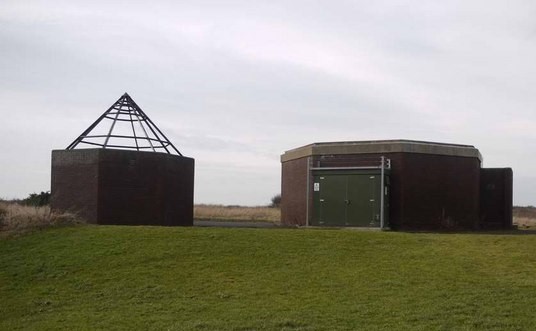Water Industry (Scotland) Act 2002

|
| The Scottish Water sewage pumping station, St Andrews. |
Contents |
[edit] Introduction
The Water Industry (Scotland) Act 2002 was passed on 14 February 2002. It is an Act of the Scottish Parliament to "to make further provision in relation to the Water Industry Commissioner for Scotland and to provide for the establishment of Water Customer Consultation Panels; to make further provision in relation to the regulation of the quality of drinking water; to make provision for the establishment of Scottish Water, the transfer to Scottish Water of the functions of the water and sewerage authorities established by section 62(1) of the Local Government etc. (Scotland) Act 1994 and the dissolution of those authorities and in relation to the functions of Scottish Water; to make further amendments of the law relating to water and sewerage; and for connected purposes.'
In England and Wales, requirements for water supply and wastewater services - which were privatised in 1989 - are covered by the Water Industry Act 1991, which came into force in 1991. This was amended by the Water Industry Act 1999, an Act ‘…to make provision in relation to Scotland for the establishment and functions of a Water Industry Commissioner for Scotland’.
[edit] Structure
The Water Industry (Scotland) Act 2002 is split into four parts:
- Part One: Water industry commissioner and the representation of consumers.
- Part Two: Drinking Water Quality Regulator.
- Part Three: Scottish Water.
- Part Four: Miscellaneous and general.
Parts Two and Three of the Act are the most noteworthy in terms of the changes they brought about.
[edit] Part Two: Drinking Water Quality Regulator
The Act established the role of the Drinking Water Quality Regulator (DWQR) - a body which is independent of Scottish Ministers. In addition to ensuring the safety of drinking water in Scotland (primarily by holding Scottish Water accountable), the DWQR handles the monitoring and inspection of the water supply.
Its enforcement powers were established as requirements of The Public Water Supplies (Scotland) Regulations 2014. The DWQR is permitted to act if the requirements of the 2014 regulation are not upheld. It is also able to exercise emergency powers to force water suppliers to carry out actions (such as repairs) if water supplies become compromised.
As part of its efforts to ensure the safety of water supplies, DWQR works with Citizens Advice Scotland. The two entities handle consumer issues that have not been satisfactorily dealt with by Scottish Water.
[edit] Part Three: Scottish Water
The establishment of Scottish Water is perhaps the most significant provision of the Water Industry (Scotland) Act 2002. It replaced the North, South and East of Scotland Water Authorities.
The primary role of Scottish Water is to provide clean water and treat wastewater for homes and businesses in Scotland. It is funded through customer fees and funding allowed by the Water Industry Commission for Scotland.
Despite being a Government entity, Scottish Water has a board structure similar to that of a commercial enterprise, operating under the Water Services etc. (Scotland) Act 2005. The Scottish Government sets the objectives and appoints the chair and non-executive board members of Scottish Water.
[edit] Related articles on Designing Buildings
- Devolution.
- Drinking water quality.
- Drinking Water Quality Regulator for Scotland DWQR.
- Ofwat.
- Pumping station.
- Scottish Government urged to review infrastructure.
- Scottish planning policy.
- The future infrastructure of Scotland.
- Water Act 2014.
- Water for Scotland.
- Water Industry Act 1991.
[edit] External resources
Featured articles and news
Government consultations for the summer of 2025
A year of Labour, past and present consultations on the environment, the built environment, training and tax.
CMA competitiveness probe of major housing developers
100 million affordable housing contributions committed with further consultation published.
Homes England supports Greencore Homes
42 new build affordable sustainable homes in Oxfordshire.
Zero carbon social housing: unlocking brownfield potential
Seven ZEDpod strategies for brownfield housing success.
CIOB report; a blueprint for SDGs and the built environment
Pairing the Sustainable Development Goals with projects.
Types, tests, standards and fires relating to external cladding
Brief descriptions with an extensive list of fires for review.
Latest Build UK Building Safety Regime explainer published
Key elements in one short, now updated document.
UKGBC launch the UK Climate Resilience Roadmap
First guidance of its kind on direct climate impacts for the built environment and how it can adapt.
CLC Health, Safety and Wellbeing Strategy 2025
Launched by the Minister for Industry to look at fatalities on site, improving mental health and other issues.
One of the most impressive Victorian architects. Book review.
Common Assessment Standard now with building safety
New CAS update now includes mandatory building safety questions.
RTPI leader to become new CIOB Chief Executive Officer
Dr Victoria Hills MRTPI, FICE to take over after Caroline Gumble’s departure.
Social and affordable housing, a long term plan for delivery
The “Delivering a Decade of Renewal for Social and Affordable Housing” strategy sets out future path.
A change to adoptive architecture
Effects of global weather warming on architectural detailing, material choice and human interaction.
The proposed publicly owned and backed subsidiary of Homes England, to facilitate new homes.
How big is the problem and what can we do to mitigate the effects?
Overheating guidance and tools for building designers
A number of cool guides to help with the heat.
The UK's Modern Industrial Strategy: A 10 year plan
Previous consultation criticism, current key elements and general support with some persisting reservations.
Building Safety Regulator reforms
New roles, new staff and a new fast track service pave the way for a single construction regulator.
























